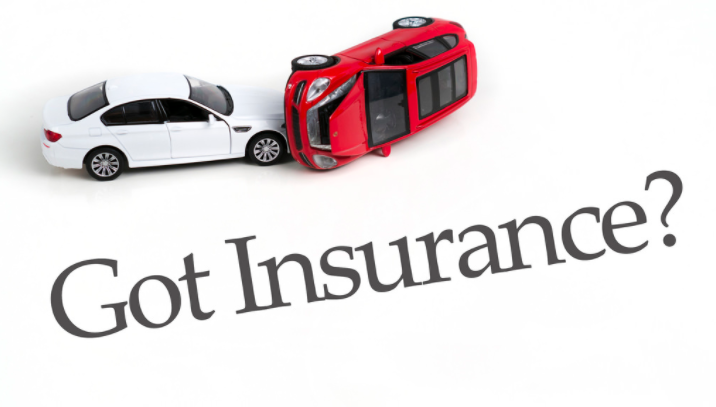Do you own a car, and are seeking to get insurance? You should be, as this is a part of protecting your investment in a vehicle.
But like most people, you might lack a basic understanding of car insurance terms. For example, many people do not understand what premiums or deductibles are. And many don’t know how to analyze details of car insurance policies.
In many parts of the US (47 states), you are forced to have some form of car insurance. Thus, you’ll also need to know about such laws.
So where do you start your education? Obviously, it’s with this article.
Also Read:
- The Simple Guide to Car Financing
- The Simple Guide to Car Financing – When You Visit a Dealership
- The Simple Guide to Car Financing: Shopping for Loans
You’ll need to understand a variety of factors, including your car model and its effects on policies, how your driver record factors into the decision, and your budget.
We’ll help by providing information on what you need insured in case of an accident. We’ll also discuss insurance types, understanding its different parts, and tips to reduce your insurance costs.
We shall start with the different forms of coverage.
Auto Coverage Types
If you own a car, you need to ensure it. It’s mandatory by law in most states. This leads to the first term, called a “policy”. This is what you buy when getting an insurance.
Policies are formed based on many factors. They include the car you drive, and the insurance you desire. In fact, insurance policies are made up of many coverage types…
- Collision – You get paid if you collide your vehicle into an object (including another car).
- Liability– You get paid for body injury or damage to other’s properties (accidentally). Those include medicinal expenses, suffering and pain, and damaged ability to receive wages. Property damage involves anything, from cars to buildings. Also, you may get paid for costs of court defense. States in the US usually set a minimum liability you must purchase, so pay attention to that.
- PIP – Stands for “personal injury protection.” This is mandatory in many states, where you’re paid for personal injury to get treated after an accident.
- Comprehensive– You get paid for car damages out of an accident. They include losses as a result of natural disasters, theft, or vandalism.
- Uninsured Motorist – You get paid for car damage in an accident resulting from drivers that lack liability insurance.
- Medical Coverage– You get payment for medical recovery resulting from auto accidents.
- Rental Reimbursement– You get paid for coverage on a rental car if damaged in an accident. This coverage follows a daily limit for the rented car.
A lot of policies will combine many forms of coverage. Thus, when selecting insurance, you’ve got to be sure what coverage is necessary by law. This’ll inform you on the minimum amount needed to insure your vehicle.
Also, be sure to seek additional forms of insurance. In case of an accident, don’t just stick to minimum. You don’t want to foot 1000s in bills that you can’t pay off.
With the terminology parts over, we’ll look at what your auto insurance needs are.
Understanding Your Car Insurance Needs.
Don’t just settle for getting the least amount of insurance possible. Buy more coverage to cover a variety of probable issues that you may encounter often on the road. Thus, when knowing the needs for your insurance, look at the following 5 principles…
(1) Understand the Laws of Your State.
47 US states force you to get liability insurance. This pays off your liability damage, in addition to property damage you do to other drivers.
15 US states force you to purchase (PIP) coverage. Those include Michigan, NY, NJ, Florida, Maryland, and Massachusetts. This pays medical expenses and wages lost in case accidents happen.
The minimum required is usually set by law, but we encourage you get more coverage (just to be safe).
(2) Be Aware of Your Options.
You’ve got a lot of insurance options, but you need to know what you’ll truly need. For example, would you like coverage for damaged rental cars, in case it gets damaged? Or do you want to add warranty for car parts and labor, if specific components break down? You need to understand your car to understand what you should buy.
You may also need gap insurance for leased vehicles. This pays differences in what you owe for a totaled leased car, and what the insurer pays.
(3) Understand How Much You Must Spend.
After the 1st 2 principles, you can now piece a comprehensive insurance policy. The starting piece is always liability insurance. If you injure someone without that, you may lose personal assets to pay for damages. Thus, you must be aware of your assets, knowing what you may lose if accidents happen.
Many insuring companies feel uneasy offering liability coverage. But for you, it is additional money for protection of your assets if accidents happen.
Also, when knowing what to spend, run different accident scenarios in your head. This’ll give you an idea on what you must buy. For example, ask yourself about likely damages to your car, self, and others in case of an accident.
(4) Understand Your Vehicle.
Can you replace your car if you total it? If you can’t, be sure to get collision and comprehensive coverage.
When buying this coverage, you’ve got to factor in your car’s price. There’s a difference between a $2500 and $50K dollar car. The first doesn’t require collision coverage. The 2nd necessitates it, where paying an extra $200 per year may be useful.
(5) Additional Insurance Options.
Other forms for insurance such as health and homeowner insurance pay for auto accidents too. For example, with our health coverage, all you may need for your car insurance would be a PIP. Thus, be sure you know of the types of insurance you already have. This is so you do not pay for coverage you don’t need.
To know what you need, be sure to look at the available policies you can get, and the amount you might have to gamble. For example, you may lose money buying collision insurance if your car lacks proper value. Thus, it may cost less money to fix than to maintain the insurance.
So remember, insurance defines how much you want to pay for damages, as insurers pay the rest. After deciding what you want to pay for and how much, you can start forming your policy!





Add comment